After a visit to Kyoto which we talked about last week, the six of us, family and friends, went on to Hiroshima, and visited the Itsukushima Shrine and the Peace Memorial Park. The Park is situated under the hypocenter of the atomic bomb blast, and houses numerous memorials, including the A-Bomb Dome, that we’ll look at today. Let’s look at one shot from Itsukushima before moving on to a number of ways in which I depicted the dome.
Itsukushima Shrine is actually situated on a small island that you have to get a ferry to. To get the ferry we took a tram from next to our hotel, for about an hour, to the Miyajima Guchi. Miyajima is the name of the island with the shrine. Some of you will have seen photos of the Itsukushima Shrine and the Torii, or Shinto Gate that sits in the sea in front of the shrine. The shrine itself is often photographed surrounded by water, but on the day we went, even when the tide was in, at its highest point, the water didn’t make it anywhere near even the front most pillars of the shrine, so it was never totally engulfed by the sea. It’s a nice shrine, but very touristy, and without timing your visit to coincide with a big high tide, it isn’t very photogenic. I didn’t take any photos of the shrine itself, except from the ferry on the way in. By the way, if you ever visit Japan and get a JR rail pass, which makes travelling here relatively cheap by comparison, you can also use the JR ferry for free. Having said this, it’s only 70 yen which is about 70 cents U.S. so it won’t break the bank either way.
Also, if you do visit, and you are not restricted by being with others, as I was on this visit, I suggest you stay until the sun-sets, because it sets behind the mountains of the mainland, behind the Shinto gate in the sea. I tried to do as much as possible with the gate under the circumstances, and used a very long exposure to smooth over the sea. Let’s take a look at image number 1766, in which we can see what I came up with. This is actually a thirteen second exposure. I was using the Singh-Ray Variable ND filter, which basically is like a really strong PL filter, that allows you to dial-in as much darkness as you need. I find it works well with the 70-200mm that I was using it with. I selected an aperture of F8, and had the ND set to just about full, which blocks out about 8 stops of light. At its weakest the Vari-ND blocks around 2 stops of light, so it’s good in that you don’ have to carry around lots of different ND filters. Anyway, as I said, I basically smoothed the sea over by using the Vari-ND, and you can actually see some pebbles on the sea bed. I was standing at the edge of where the waves stopped to shoot this, and the tide was on its way back in again, so I had to keep my eyes on my footing here. A relatively uneventful shot, but should give you an idea of the place. If I ever get a chance to come back here, I will definitely allow myself to stay until dark, so that I can get the sunset, which I suspect may even be possible to line up with the gate at certain times of the year, if not most, so it should add a fair amount of interest to the shot.
Well, we’d decided to leave late afternoon, and let everyone have an hour in the hotel before going out for dinner, but another reason why I wasn’t too worried about having forfeited my chance to get sunset shots at the Itsukushima Shrine on this day, was because I wanted to pay my first visit to the A-Bomb Dome at the Peace Memorial Park. This is actually just one stop further away from the hotel we stayed in, so me and the other half got off here, and let the other four go on back. We arrived at around 5:30PM, and had just a little bit of direct sunlight left, so I spent a few minutes to just first walk around the Dome to see how I was going to approach shooting it. The first thing I noticed is that from the front of the dome, near the river that runs past it, it is not easy to get a clear shot of the dome in its entirety, as the area behind the dome is pretty well built up. There are just normal office blocks and shops so it really doesn’t make for a very good photograph, unless you want to show how built-up it is of course.
So, the first shot of the series was image number 1767. As you can see, the sun was very close to the horizon at the end of the day, so I decided to use that to effect, by positioning myself so that the sun shone through one of the windows in the center of the building, and use a shutter speed fast enough to through the building and the trees between me and the building into silhouette. As you’ll see in the next image, it was far from dark yet, but we can make a silhouette very easily with a fast enough exposure and smaller aperture. Here I used F11 for 1/200th of a second, with ISO 100. As I was pretty close to the dome I used my 16-35mm lens at 35mm. There was of course only a limited amount of time with the sun shining through the window, and I only got about three frames, even with moving a little. The trick is to get positioned with the sun just coming into the position, as it moves really quite quickly through such a small space. Then a few moments later, I tripped the shutter. I wanted lots of the two trees that you can see here in the shot as well, so I shot it quite wide like this, but I ended up cropping about 15% off the left side. This was partly because it wasn’t adding anything, but more so because there were some buildings quite obvious in the distance that detracted from the shot. There are actually a few building in the bottom right too, but they don’t stand out as much, so I left them.
Next, let’s take a look at image number 1768. This was shot some 17 minutes after the last shot, and yet it is still quite bright. This is the only shot that we will look at that was taken from the side close to the river. I used the shift function of my 24mm Tilt-Shift lens for this shot to correct the trapezoidal effect that we see when we look up at buildings. I was actually standing right next to the railing a few metres from the building, and had also shot this with the 16-35mm, but it was quite badly distorted, with the building leaning inwards as I looked up at it. If you haven’t used or seen a tilt-shift lens, it basically allows you to slide the lens up or down, or side to side, depending on whether you rotated it or not. This is called shifting, and is what corrects the trapezoidal effect, or buildings leaning when we look up at them. There is a second knob on the lens that tilts the lens. Tilting basically moves the focal plane to varying angles away from parallel to the film plane, which is where it usually is with a normal lens. This is handy for lying what can be a very shallow depth-of-field across an area of the scene that is not necessarily parallel to your camera’s film plane. This is useful for photographing say a rock face that would otherwise require a very small aperture to get the depth-of-field, but also it can be used with artistic effect, to make a kind of miniature world from a normal scene. I actually went into detail about this lens and this surreal effect in Episode 13 of this Podcast, so if you want more information, maybe you can go back and listen to that episode.
Back to the image we were just looking at though. You can see that the building is now reinforced with metal bars inside, and there has been a certain amount of work done to fix the cracks in the facing cement. It’s not doing bad though to say that this was the closest building to be still partially standing following the horrific blast on August 6, in 1945. The exact point of the blast, called the hypocenter, was about 150m or 500 feet away. It was debated as to whether or not the building should be pulled down, or in more recent years just let it fall down, but it was decided to do just enough repairs to stop it from falling down, and keep it as a Peace Memorial. The building itself was actually designed by a Czech architect named Jan Letzel, and was built in 1915. At the time of the bombing it was being used as an Industrial Promotion Hall.
After shooting a little more, we went back to the hotel for a short while, and then 30 minutes before we were due back in the bar for this nights session, I was back in front of the dome, shooting image number 1769. I wanted to shoot the building at night, as well as during the day, as I believed they illuminated it. I don’t really know if this works, but I tried converting this image to black and white, by reducing the Saturation of all the channels in Lightroom. I then tweaked the Luminance of each channel to bring out some details in the brickwork, but then wanting a little something else, I tried raising the Saturation of the blue channel just slightly, to put a touch of colour back into the sky. I found this interesting, but not entirely sure it really works. Maybe you could let me know what you think in the gallery or in the forum at martinbaileyphotography.com.
I shot this with my 24-105mm F4 lens, with an aperture of F8 for 20 seconds at ISO 100.
Next let’s take a look at image number 1771. Here I haven’t messed with the colour, apart from the white balance, so the building has a bit of a green cast from the lights, and the lights inside the building are giving off a warm orange glow. The building actually originally came back to this wall in the foreground. All but the front section and the dome, and the smaller wall around the building was demolished in the blast of the bomb. I shot this with the camera in portrait mode, but then cropped most of the top of the image away, as it wasn’t adding anything. I called it a day here though, and went to meet the family and friends at a nearby eatery that we’d decided on before I went back to shoot the dome at night.
The following day we were all going to spend the day in the Peace Memorial Park, looking at the various memorials and we planned to take a steady look around the Peace Memorial Museum. We entered the park from the corner with the dome, so let’s look at one last image from this morning before I tell you a little more about the park and its various memorials. It is image number 1773. Again with the tree in front of much of the dome, I was again shooting with the 24-105mm F4, with an aperture of F8, for 1/40th of a second, with ISO 100. I was shooting at 32mm, so I could have also used my 16-35mm F2.8 lens, but both are nice and sharp, and the 24-105mm is more versatile, which is very welcome when you’re basically having to be a tourist, with family, as opposed to a photographer. I don’t remember whether I tried shooting with a PL filter, but the sky was pretty pale, so I decided to convert this one to pure black and white, which enabled me to make a bit of a contrast between the sky and the clouds. I also like black and white here, just because of the kind of sad, and even sinister look of the dark tree in front of the building. The building itself was almost too warm and bright in the morning light, and didn’t really match that tree.
The dome is on the edge of the Peace Memorial Park, which as I mentioned earlier contains a number of other memorials. After walking further into the park the first one we visited was the Childrens’ Peace Memorial. This was built after a young girl called Sadako Sasaki died of a form of leukaemia, from radiation exposure from the bomb. Sadako folded 1,000 paper cranes in the hope that this would cure her. Now children in Japan group together and fold a thousand cranes when they wish for something, and there are some small glass boxes near the memorial that contain folded cranes from all over the country. There had actually been instructions from the local government to tear down strips of houses in the city center, to act as fire breaks, as they feared they may be bombed and didn’t want the fire to spread across the city without anything to stop it. Many people had been driven from their homes, but the most tragic part of this is that it was mostly young children that were being used to tear down and clear the houses away to make the fire breaks. They had just about all arrived for work when the bomb exploded at 8:15AM, obviously meaning that many children were either burned instantly, or subject to severe burns, which killed them in the coming hours and days, or like Sadako, were exposed to the radiation, which killed them over the coming months and years.
The park also has a Cenotaph for Korean victims, as there were many Korean victims too, as they had been brought to Japan to work, and of course, the bomb didn’t understand nationalities, or age, or anything. It just tore through Hiroshima, wiping most everything in its path off the face of the earth. Surprisingly there were survivors, and there are many reports of the horrors that followed. Apparently after being exposed to radiation and also as many people were suffering severe burns, they made their way to the river. When they got there, many took a drink. When you drink with severe radiation poisoning though, basically your insides turn to a kind of sherbet, and you die. Because of this the river that runs in front of the dome and through the city of Hiroshima was awash with bodies. Some said that there were so many bodies, you couldn’t see the water. There are also reports of peoples skin melting and dripping off their bodies as they walked around, trying to either find their loved ones or just in a hell like delirium. In total by the end of 1945, some 140,000 people had died either in the blast or in the months following it.
I didn’t take photographs of any of the memorials, except the dome, and the Memorial Cenotaph in the center of the park. I didn’t post any photos of the Memorial Cenotaph, as I only really photographed it for my own memory of the visit. It was quite a poignant time, walking around the park. I was quite moved by much of what I saw. The Memorial Cenotaph, through which you can see the dome in the distance, contains an epitaph with an inscription. It says “Rest in peace, for we will never repeat the mistake”. Notice the word we in this sentence. This doesn’t mean the Japanese, and it doesn’t mean the Americans. It is totally non-judgemental, and really means “we” as in the entire human race. The Peace Memorials here are to keep the horrors of the bomb from fading away in time. They are a reminder of the horror and futility of war in general. If you are ever in Japan, please do try to make your way to Hiroshima and spend a day in the Peace Memorial Park. One of the main other things that I haven’t mentioned yet is that there is a large museum in there too, with lots of information on the bombing and the years that followed. There are also lots of actual things that were recovered from the wreckage, such as roof tiles that melted in the intense heat. It costs just 50 yen, or 50 cents to get in. I forget the exact price but for just a few dollars you can also rent an audio guide in many languages. You basically get a little device with headphones that allow you to listen to information on all of the exhibits. I read Japanese about as well as I read English, so I decided to read my way around, but my family had the English audio and said it was pretty good. Whatever your background, if you are human, and have a heart, and a thinking mind, I really do think it would be worth a day out of a holiday here in Japan to visit, to see for yourself what it must have been like to be one of just two atomic bombs that have been used in war in the history of the world.
So, I hope you enjoyed the photos of the dome, and a little bit of information on the Peace Memorials. I’ll put a few Wikipedia links into the show-notes, so that you can read up yourself on some of the history and information about this historical and touching place.
Remember that the Abstract Assignment is still in progress, and I’m seeing some great images being posted. You can post your entry until the end of May 19th, and then I’ll start the voting for two weeks after that, when we’ll find out who the winner is. That’s about it for this week though, so for now, you just have a great week, whatever you do. Bye bye.
Show Notes
Here’s a link to a Wikipedia page on the Hiroshima Peace Memorial Park: http://en.wikipedia.org/wiki/Hiroshima_Peace_Memorial_Park
Here’s more information on the dome itself: http://en.wikipedia.org/wiki/A-Bomb_Dome
There’s also a page on the Itsukushima Shrine: http://en.wikipedia.org/wiki/Itsukushima_Shrine
Here’s a link to the Vari-ND page on the Singh-Ray filters Web site: http://www.singh-ray.com/shop/vari-nd-variable-neutral-density-filter/
 Subscribe in iTunes for Enhanced Podcasts delivered automatically to your computer.
Subscribe in iTunes for Enhanced Podcasts delivered automatically to your computer.
Download this Podcast in MP3 format (Audio Only).
Download this Podcast in Enhanced Podcast M4A format. This requires Apple iTunes or Quicktime to view/listen.

Posted on behalf of Martin by Michael Rammell, a Wedding Photographer based in Berkshire, England. Michael also has a long-standing passion for Nature & Landscape photography. To catch up with Michael, visit his Web site, and follow him on the following social networking services.

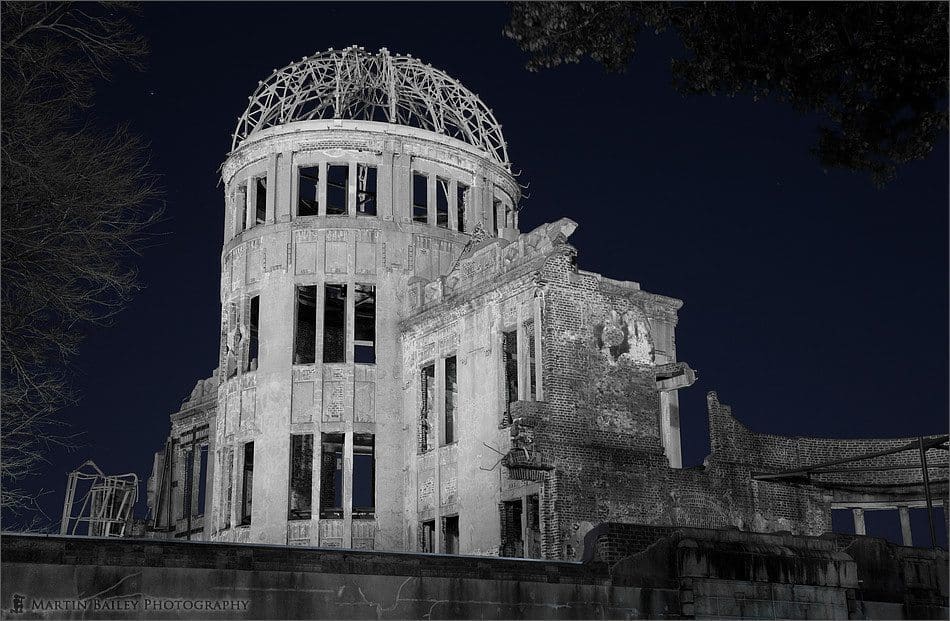
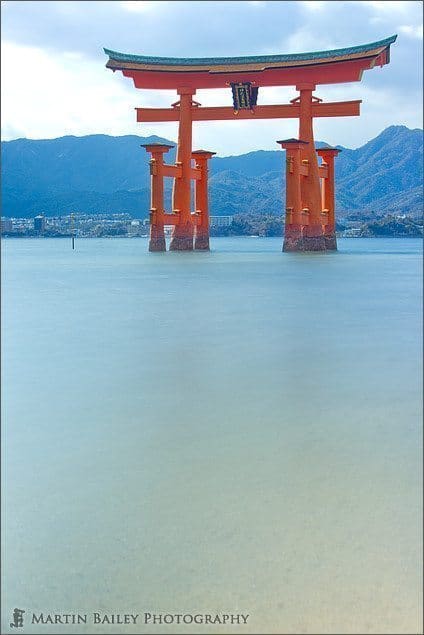
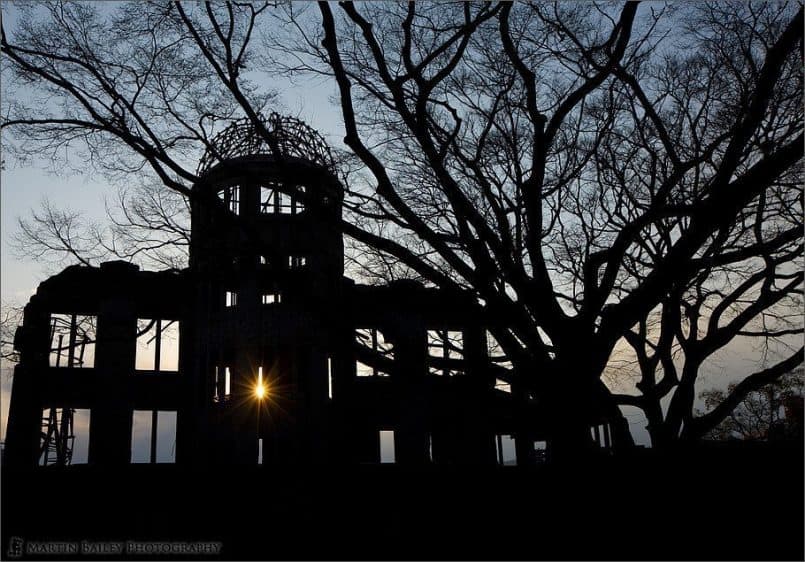
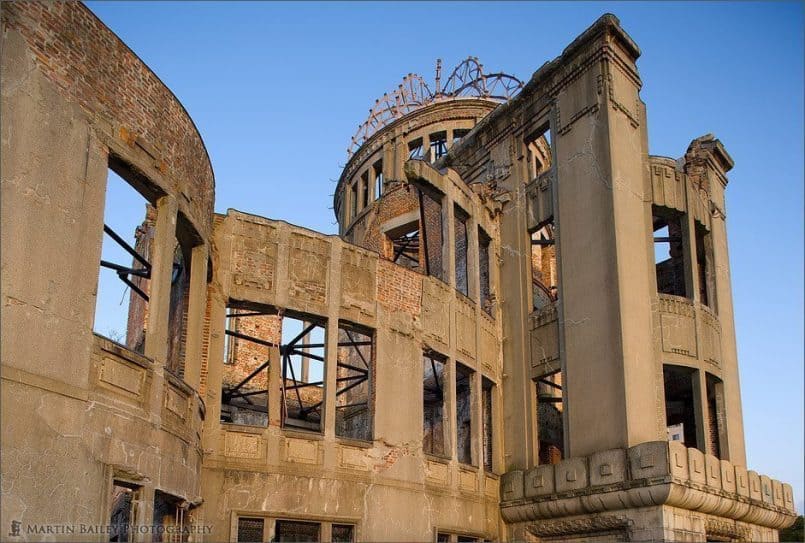

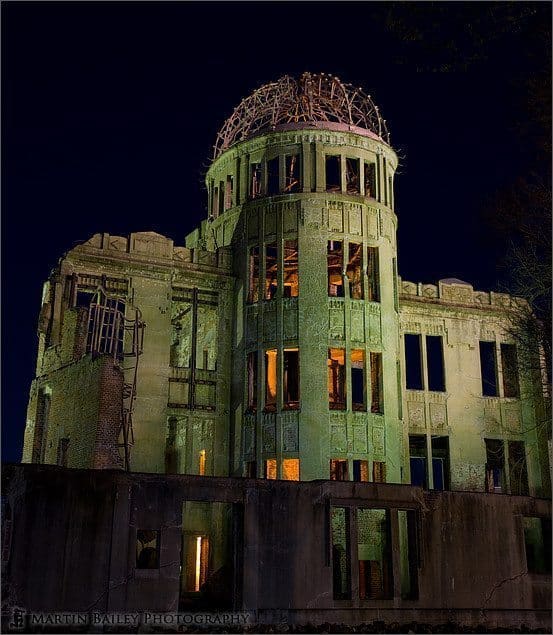
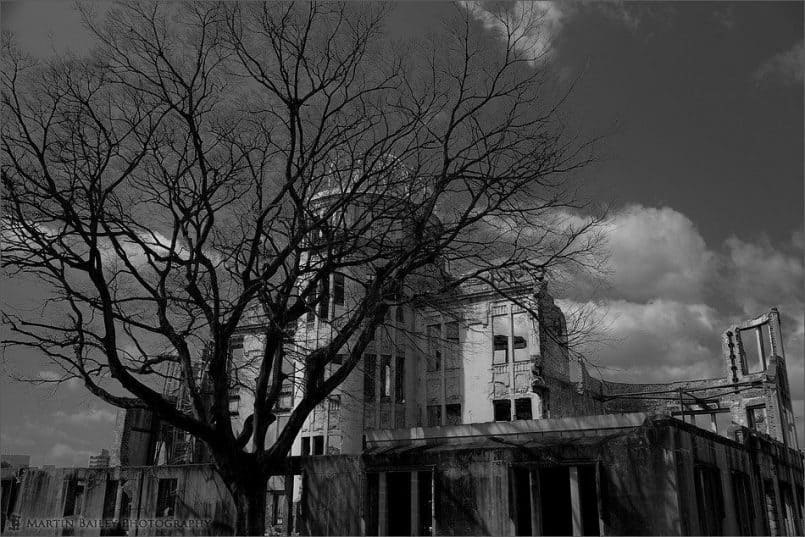







0 Comments